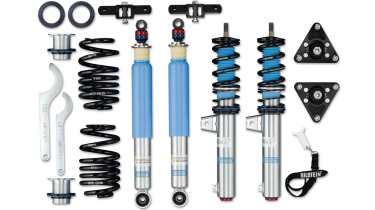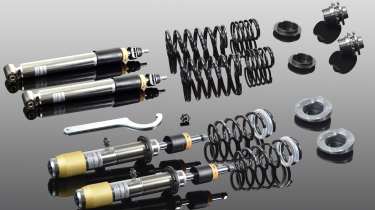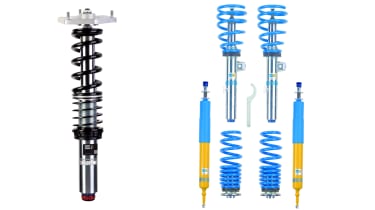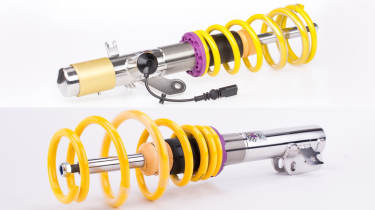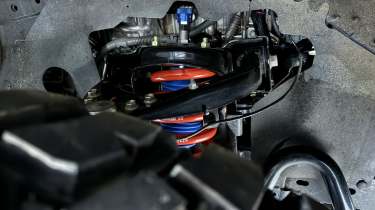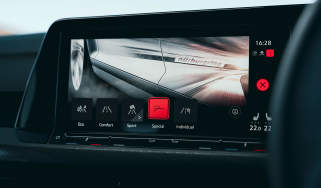Coilover suspension explained: different types of coilovers and what they do
Lots of performance cars have them and the aftermarket is awash with them, but should you be fitting a set of coilovers to your car?
You can’t please all of the people all of the time, and when it comes to vehicular suspension this old adage certainly rings true. Inevitably manufacturer’s set ups are a compromise and for every degree of improvement they make to ride comfort there will be customers who will mourn the lack of focus in a car’s handling ability. Making a car that rides well and has otherworldly tactility is automotive nirvana and rarely achieved.
The vast majority of cars are equipped with a set of springs and dampers with, in very simple terms, the springs setting the ride height and absorbing bumps in the road while the dampers are there to prevent the car from bouncing up and down on its springs and to return the car to a level ride. Both components can be uprated and improved with most systems aimed at making the car slightly lower and more sporting.
Generally speaking, and up to a certain point, lowering your car’s centre of gravity will improve the way it performs when cornering. But there are a whole lot of caveats along with that sentence. If you go too low, you can also adversely affect the car’s roll centre, or the point around which it effectively pivots, which makes handling worse.
Also, if you force your suspension arms to make angles far outside of their design parameters, this also contributes to the problem and that’s before you start examining spring and damper rates.
Fitting new springs and dampers can make a marked difference to the way a car looks and handles but they will inevitably be a compromise as their spring and damper rates will remain fixed. And this is where coilovers enter the picture. The main difference between a coilover suspension and a ‘normal’ set of springs and dampers is that a coilover allows individual adjustment of ride height.
This is done via a screw thread on the suspension strut which allows owners to raise or lower their car without the need for a workshop or access to a ramp. However, not all coilovers are born equal and there are different types to choose from.
Non-adjustable coilovers
While the ‘non-adjustable’ epithet may seem like a non-sequitur, the lack of adjustment refers to the dampers, not the springs. What is adjustable, however, is the ride height. With each damper using a threaded body or platform to allow infinite ride height adjustment, your car can be dialled in to select a wide range of ride heights with the damping rate fixed in position by the manufacturer. Once fitted coilovers can be adjusted by an expert and corner-weighted. This means that the car is distributing its weight perfectly on all four tyres and optimising handling.
Adjustable coilovers
A fully adjustable set of coilovers will allow you to adjust the ride height but with the added benefits of adjustable damping rates. Bump and rebound can be adjusted in unison by the simple rotation of the adjuster knob on the damper itself. ‘Full soft’ for everyday commuter comfort, or ‘full hard’ for a day at the track – with a multitude of options in-between. Damper setups like this also allow you to experiment with differing front and rear characteristics on your car to dramatically alter its handling demeanour too, so if you want a loose back end and obedient front grip, it’s only a simple adjustment away. Naturally enough the added complexity means that these coilovers are more expensive than those that only offer ride height adjustment.
Custom coilovers
You can go further and opt for the type of coilovers more likely to be seen on the Nordschleife than on the school run. These can be dimensioned and configured to individual requirements and generally come with new top mounts which allow for camber adjustments too. Unless you’re a real track day junkie with designs on going racing they’re probably a step too far for road use.
Electronic coilovers
With an increasing number of cars featuring some sort of electronic damper control it was inevitable that the aftermarket would develop systems for those drivers who want the ride height adjustment that comes with coilovers but who don’t want to lose the benefit of adjusting between damper modes at the touch of a button. Thus, it’s now possible to fit coilovers that retain switchable factory-style adjustability.
Which coilovers to choose?
There are dozens and dozens of companies that offer aftermarket coilover systems – don’t simply go for the cheapest set you can buy as there will be a huge difference in quality and performance between a cheap unbranded set and the type seen in the paddock at Brands Hatch.
Speak to owners to find out their experiences with the various different brands and talk to suspension specialists who deal in coilovers all the time. A brand that can transform a BMW might not work as effectively on a Toyota. Try to have a ride, or better still a drive, in a car similar to yours with coilovers fitted to see if they suit you in terms of ride and handling.
> How to make your tyres last longer
Lastly, consider whether coilovers are right for you. To get the best from a set you will want to be making regular adjustments depending on where and how you’ll be driving. Will you really be prepared to put the effort in and keep track of which settings work best? If you’re not sure whether you’ll put the time into getting the best from your coilovers then maybe a set of high-quality springs and dampers might do the job just as well.
Fitment and settings
Once you have made your choice, there are a couple of final, very important points to touch on. The first of which is fitment; although actually removing the original suspension units and refitting the new ones is definitely a job that can be done by any moderately talented mechanic with the right tools at home, when it comes to the black art of geometry settings, it’s well worth splashing out on getting the whole thing perfectly aligned by a pro and doubly so if you have gone down the coilover route.
Getting those all-important toe, camber and caster settings just right will not only elevate the car’s handling status further still, but will also optimise tyre wear. If you are trying to set the car up for circuit work, a race specialist with corner scales is a must.
Do I need to declare coilovers on my insurance?
Before you fit a set of coilovers it’s worth checking with your insurer whether there will be a change in premium. As a non-power-affecting modification, most are happy to make a note and move along, but if your young or have convictions they might not look at the non-standard parts quite so favourably.
